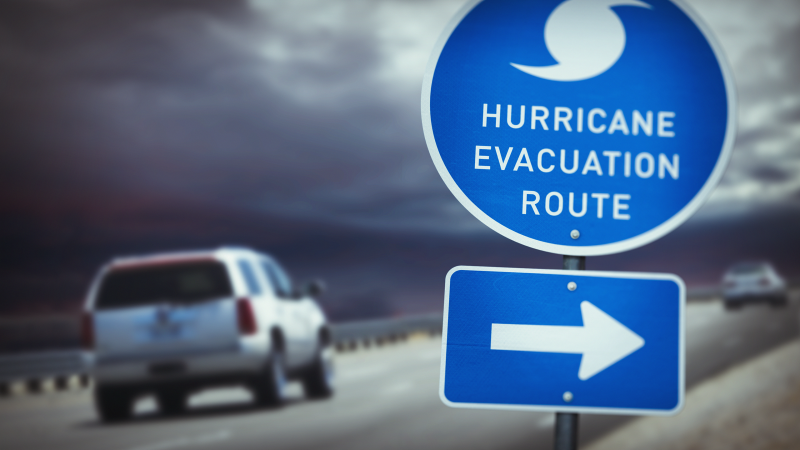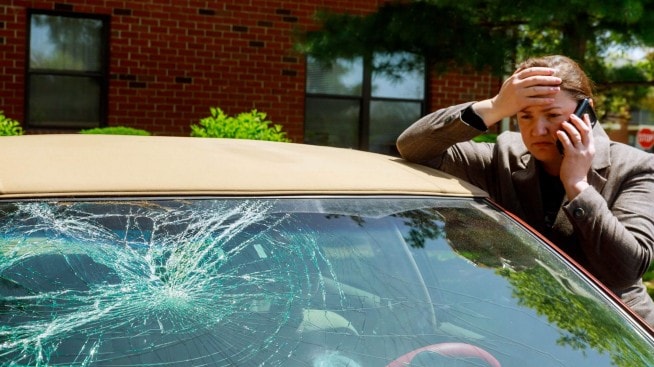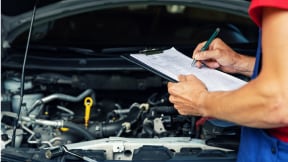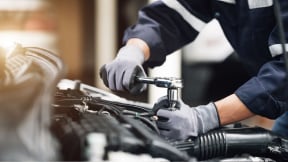How to protect your car during a hurricane

Hurricanes pose a serious threat to life and property. There’s not only wind damage to consider, but the very real risk of flooding. Planning for an adverse weather event typically means taking steps to help make sure that you and your loved ones are safe and that your house is reasonably protected. Knowing how to protect your car during a hurricane is a critical part of this equation too.
Preparing your car for a hurricane
In the aftermath of a hurricane, you may want to use your car. Whether you’re evacuating a disaster area or gathering additional supplies, having a functioning set of wheels may be extremely helpful. But for your car to be of assistance, it must first weather the storm.
As with most disaster preparedness, getting your car ready for a hurricane may require a few steps. From considering how to prepare your vehicle in the event of an evacuation to deciding where to park in advance, determining how to protect your car in a hurricane before the storm hits can go a long way. Measures may include:
Stocking your car
For basic items you may need in case of an evacuation, storing them in your car ahead of the storm is worth consideration. Federal and state officials typically offer recommendations for what kinds of essential clothing, food or medicine may make sense to pack.
A battery jump starter may also prove useful. In addition to helping jump-start your car if needed, some mobile battery packs come with USB slots that can be used to charge other electronic devices. Having a car phone charger might also be a good idea.
Making sure that each driver in your family has a copy of your car key may be important in the event you get separated. You may also want to agree in advance on a central meeting point outside of the storm zone.
Filling up your car
Topping up your tank, whether that means getting gas or charging your electric vehicle, before a predicted hurricane is another consideration. Once the storm passes, fuel may be difficult to come by. Long lines at the gas pumps or charging stations, coupled with damaged infrastructure, are often sad realities in a hurricane’s wake. Even if fuel is available, filling up your car ahead of time may help minimize necessary stops during any evacuation.
Checking your car
Having a full tank ahead of an emergency is one thing, but making sure your car works properly is another. Potentially protective measures, including car maintenance tips, in advance of a hurricane include:
- Checking your tire pressure.
- Installing new windshield wipers (or at least cleaning the old ones).
- Double checking that your car windows are properly rolled up.
A car that suffers water damage during a flood is more likely to encounter electrical and mechanical problems down the road, and may also be more difficult to sell in the future. Flood-related damage may end up reflected in your car’s title and appear in your vehicle history report.
Reviewing your car insurance
What level of car insurance does your vehicle have? Is it comprehensive coverage or the state-mandated minimum? Having a sense of what may be covered by your policy can prove helpful in the event of hurricane-related damage.
Consider making copies of insurance certificates and other car-related documents you may need, such as your vehicle registration and driver’s license. Storing paperwork in a dry, waterproof container — even something as simple as a zip-top bag — may be a smart precaution given the risk of water damage during a hurricane.
Where should I park my car in a hurricane?
Before the storm hits, you'll probably find yourself wondering where to put your car during the hurricane. While there’s typically no perfect spot to park in advance of a storm, it’s generally best to listen carefully to local, state and federal advisories as you assess your options.
One common place to park your car during a hurricane is your garage, if you have one. If your garage isn’t as sturdy or as storm equipped as you might like, parking your car tight against the inside of the garage door may be a consideration. This may not only help protect your vehicle but also your garage and any attached structures, as storms can cause considerable damage if they break into a garage.
If you don’t have a garage, you may consider parking your car close to a building or under an awning to protect your vehicle from wind and blown debris as much as possible. Municipal parking garages are another option. Your local and state authorities may be able to give further advice about parking garages near you.
Additional factors for parking your car during a hurricane that you may want to keep in mind include:
- Parking near trees or under power lines may prove risky if these are blown down by stormy winds.
- Seeking higher ground is one potential way to avoid the worst of the floodwaters.
- While finding a parking garage or other indoor parking may prove attractive, you may want to consider distance: A car you can’t easily reach after a storm is a car you can’t readily use.
- If you have multiple vehicles, parking one nearby and the others in a secure location further away may be a consideration.
Additional hurricane car safety tips
When planning how to protect your car in a hurricane, you might also consider:
- Making a “go bag” of essentials: As mentioned above, a change of clothing, some food, water and any necessary medications are obvious candidates to include. It helps to remember to pack for everyone in your household.
- Holding some cash: ATMs may not be functional, or easily accessible, in the aftermath of a major storm.
- Finding a paper map: If your phone becomes damaged or runs out of battery and you don’t have access to a charger, it may help to have a hard-copy map on hand. If your car has an infotainment system that continues to work, that might provide an additional way to access public service announcements and get help with navigation.
- Taking “before and after” photos: It may prove handy to take pictures of your car before and after the hurricane, taking care to photograph both the interior and exterior of the vehicle. If you need to file an insurance claim, these photographs may serve as proof that the damage is due to the hurricane and not some prior cause.
- Driving with caution: How you drive in wet conditions in the aftermath of a hurricane is an important consideration. Even if a puddle of water across the road looks safe, it could be deeper than expected or contain debris that may damage your vehicle. According to the Federal Emergency Management Agency (FEMA), as little as six inches of water may cause you to lose control of your vehicle. It may help to keep an eye out for damaged or weakened infrastructure or fallen objects.
Again, paying attention to state and federal travel advisories — both during and after a hurricane — is considered best practice, as these authorities will have the most up-to-date and locally relevant information for you.
In summary
Knowing how to protect your car during a hurricane is an important part of your preparation and may help reduce the risk of damage to your vehicle. By packing necessary supplies, preparing your vehicle and parking it in as sheltered a place as possible, you can put you and your loved ones in the best position to weather whatever nature throws at you.



